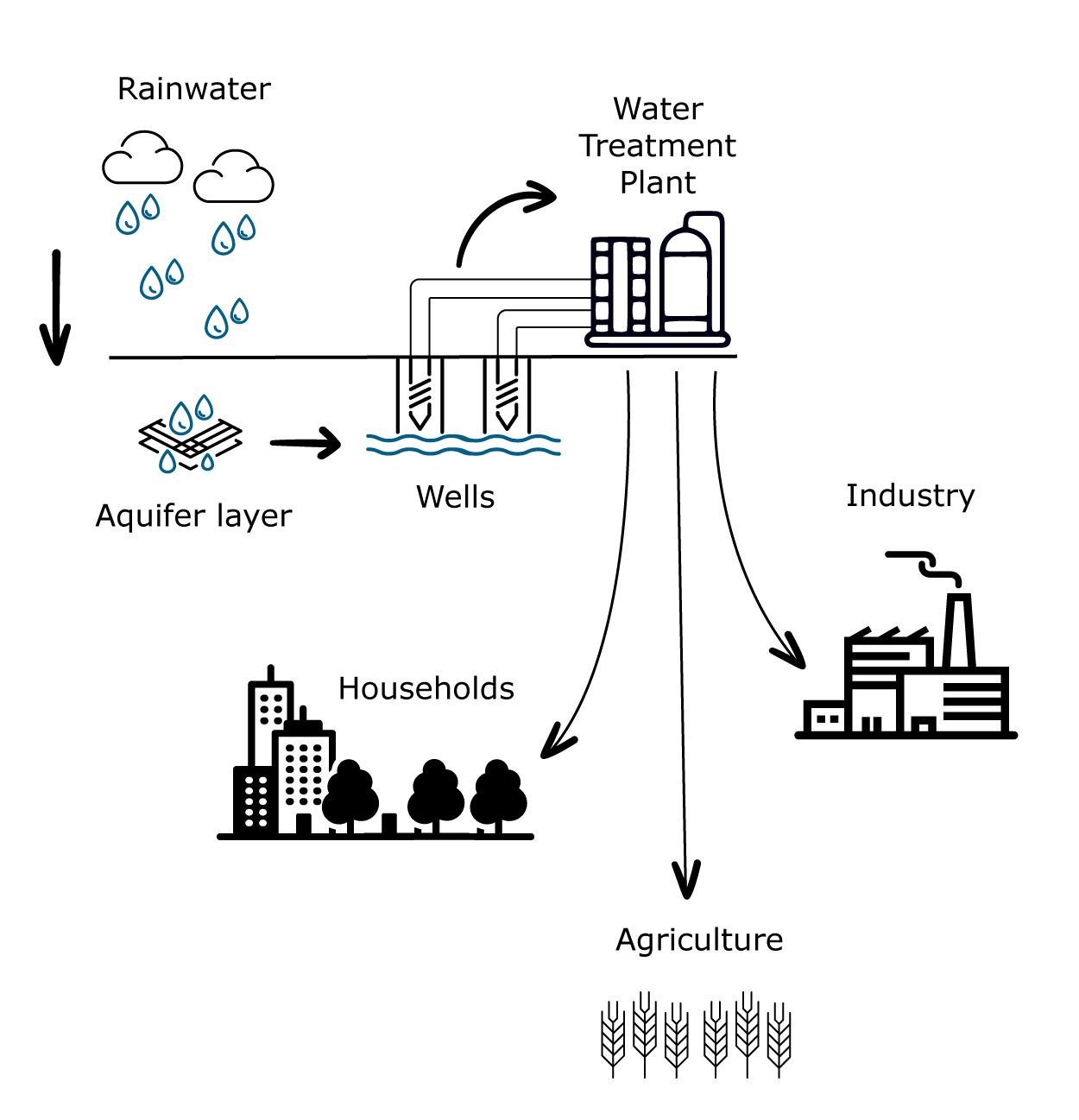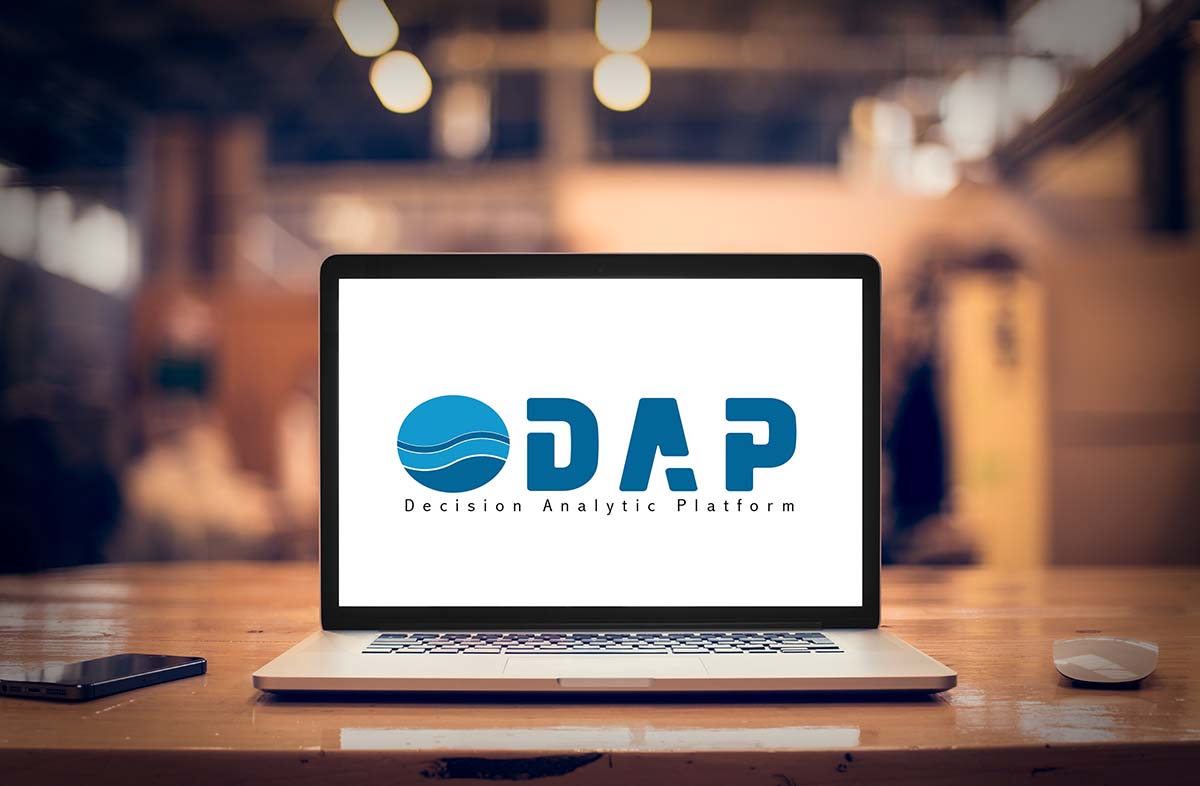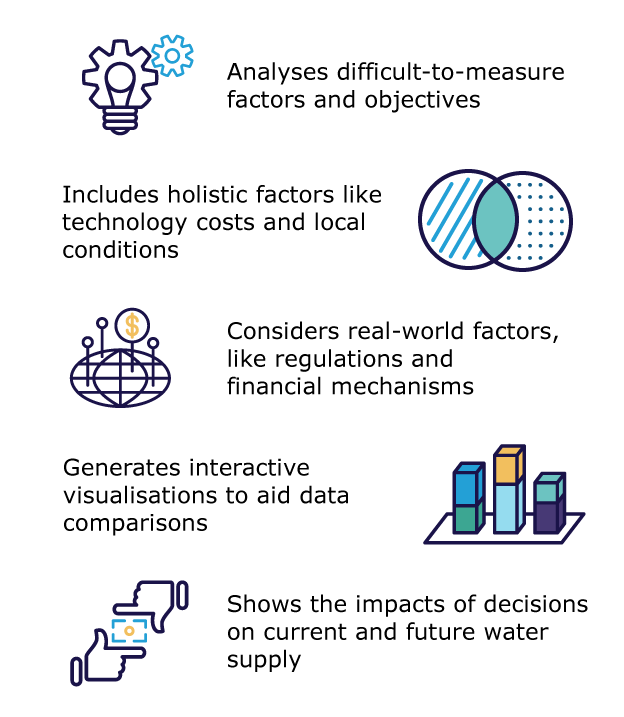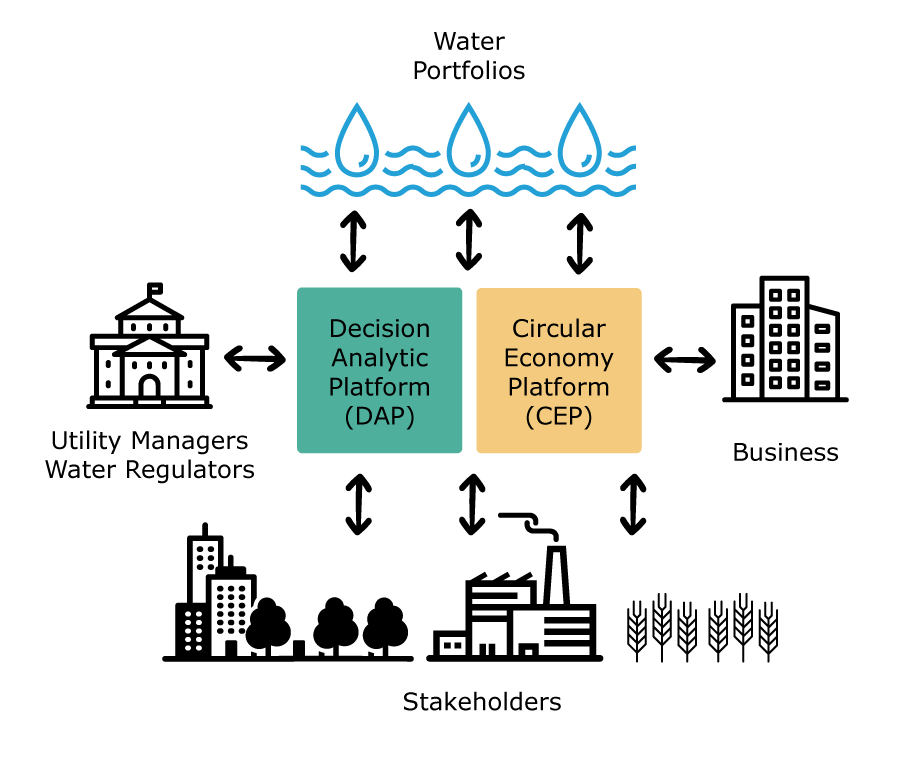Decision Analytic Platform
Supporting water regulators to make robust and efficient management decisions based on current and future conditions
Overview
Water regulators are responsible for ensuring a reliable flow with the treatment, storage and distribution of water
Water regulators make water supply decisions for a complex chain of different users
Water is supplied to different types of users. This includes industry, agriculture and households. Each user has their own water requirements and priorities, which do not often align with the available supply. This means water regulators must make complex decisions, particularly in water scarce regions. They have to consider both users’ needs and the current and future availability of water.
Existing ways of supporting water regulators in their decision-making do not fully consider social, economic and environmental impacts. Some factors are difficult to quantify, which makes the impact of potential decisions harder to compare. Changing conditions in the future, such as the impact of the climate crisis leading to droughts and unpredictable rainfall, are also not taken into account. Supporting tools for water regulators must consider all factors influencing the water supply to help them make robust and efficient decisions.


Project Ô has developed a Decision Analytic Platform (DAP) to assist in water planning activities
DAP will help decision-makers compare the impact on the water supply chain of making particular decisions
This will include assessing how to provide the most reliable water supply for users by considering current and potential future conditions. Water regulators will then be able to make strong evidence-based decisions to create a more reliable water supply.
Solution
DAP is designed to aid decision-making in water resource management
DAP will be first used in the Puglia Region of Italy and Almendralejo, Spain
Decision-makers, like Acquedotto Pugliese (AQP) in the Puglia region of Italy, will use DAP to consider the current and future sustainability of the local water supply. They can assess the best performing water planning situations under current climate and socio-economic conditions. All of this information is visualised for the users via a web-based geoportal.
Site owners like SOCAMEX in Almendralejo, Spain will use DAP to visualise the effects of implementing Project Ô technologies on a wider scale. This will enable them to fully benefit from a circular water economy approach, based on real-world information.


DAP will allow for strategic management focusing on alternative water sources and the local reuse of water
Combining the use of DAP with suitable Project Ô modules can maximise the benefits of engaging in a circular water economy
It will open up further water sources, create business opportunities and enable users to take greater control of their own water use.
DAP and CEP are complementary technologies that address the decision-making process at two levels:
- Long-term and centralised water resource planning at regulator level (DAP)
- Medium-term and distributed water resource planning at business level (CEP)